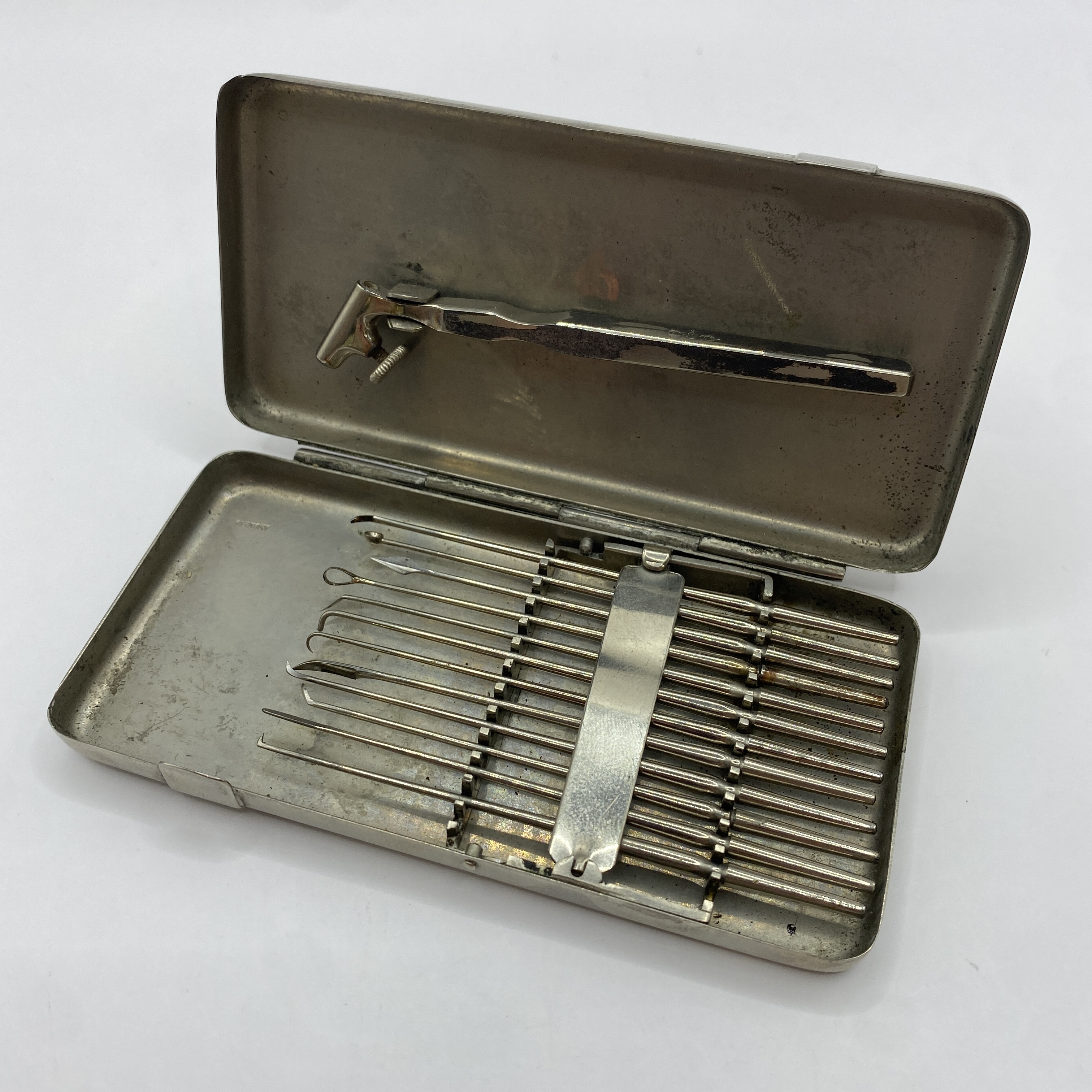Description: Cataract surgery is one of the oldest surgeries still practiced today, dating back to around 2250 B.C. For nearly 3000 years, until 1747, couching was the primary ophthalmic surgical procedure consisting of inserting a sharp needle in the white of the eye to push (or “couch”) the cataract lens to the bottom of the eye to restore vision. There are even records showing the use of thorns to perform this operation 4000 years ago in ancient Egypt! It wasn’t until the mid 18th century, however, that the first successful removal of a cataract was performed by a French ophthalmologist, Jacques Daviel, after which ophthalmics became a recognized specialty and instruments for such became more precise. Today, the cataract-forming lens would be removed through an incision of the cornea and be replaced by an artificial lens, a much safer and more reliable procedure. As seen in the assorted ophthalmic instruments case, each of the 12 devices were, and still are, used for a different purpose: the pointed needles to make a primary incision; blunt needles to enlarge the incisions; the curved spatulas to raise the cornea for access to the lens; the curette (scoop-like instrument) to remove fragments from the surgical field.
Origin: Circa 1850-1890; London, England (Manufactured in Germany)

13 Comments
order enclomiphene buy in the uk
how do i get enclomiphene from my doctor
hurler pour obtenir kamagra sans prescription
canada kamagra sans ordonnance
buy androxal generic canadian
canadian pharmacy androxal
purchase dutasteride cost at costco
cheapest buy dutasteride generic pharmacy online
where can you get flexeril cyclobenzaprine with out a perskripion
how to buy flexeril cyclobenzaprine generic pricing
how to buy gabapentin cheap real
generic gabapentin over the counter usa
get fildena purchase australia
cheap fildena australia online generic
get itraconazole generic canada
canadian discount itraconazole
buy staxyn usa online pharmacy
staxyn no doctor
get avodart how to purchase viagra
avodart 20
get rifaximin australia generic online
ordering rifaximin uk buy cheap
xifaxan manchester uk
get xifaxan without a script
kamagra bez lékařského předpisu
kamagra z kanadských lékáren